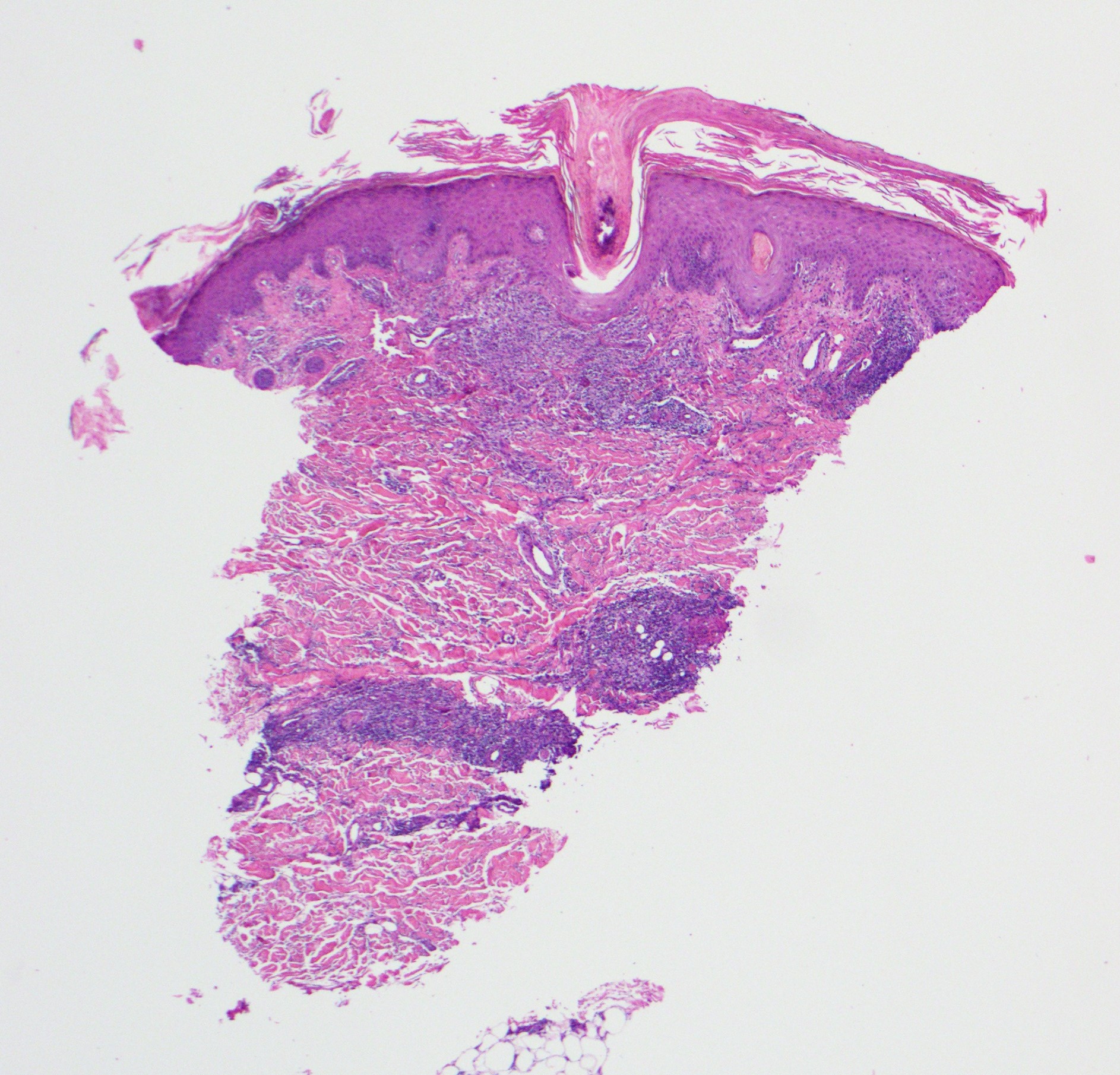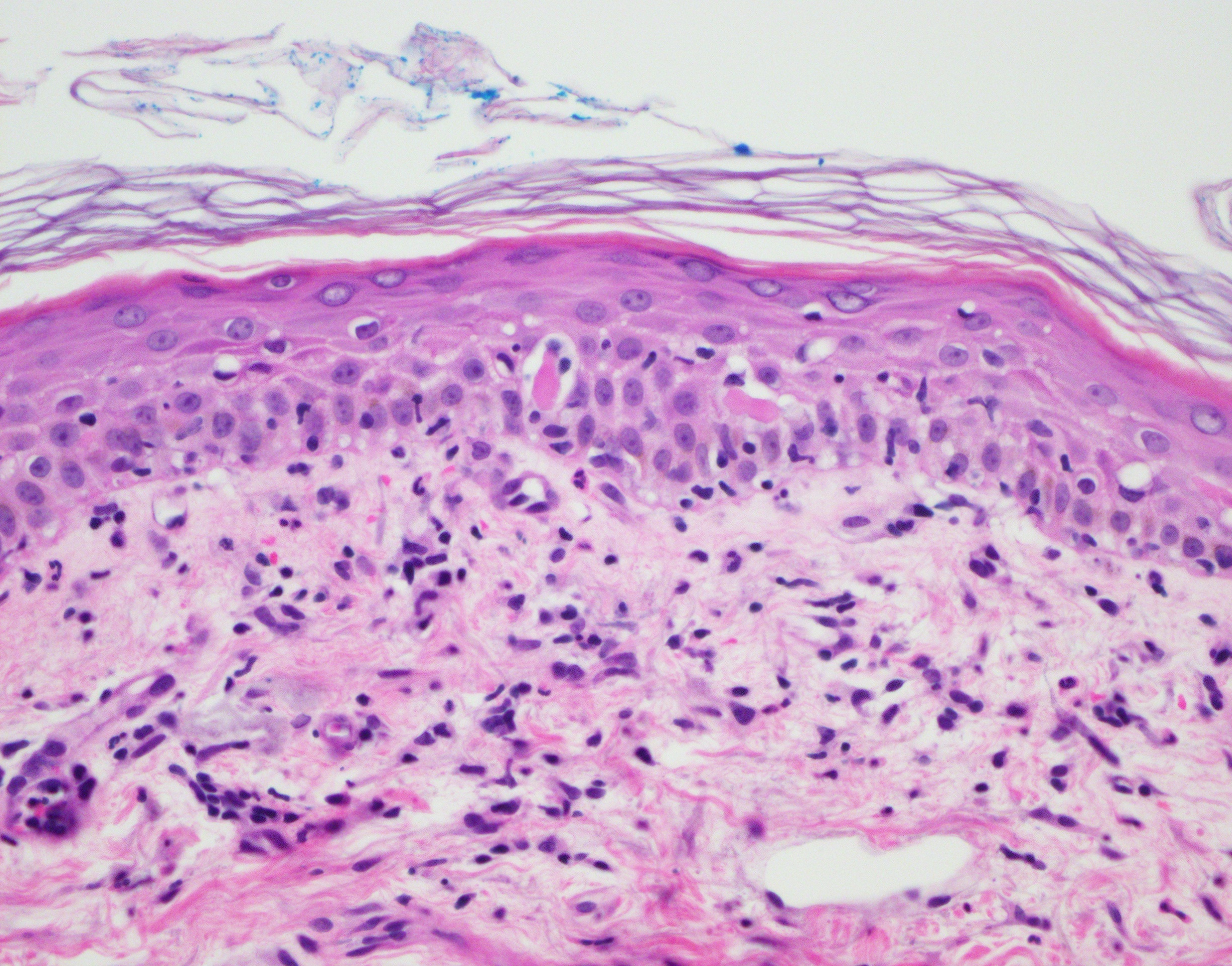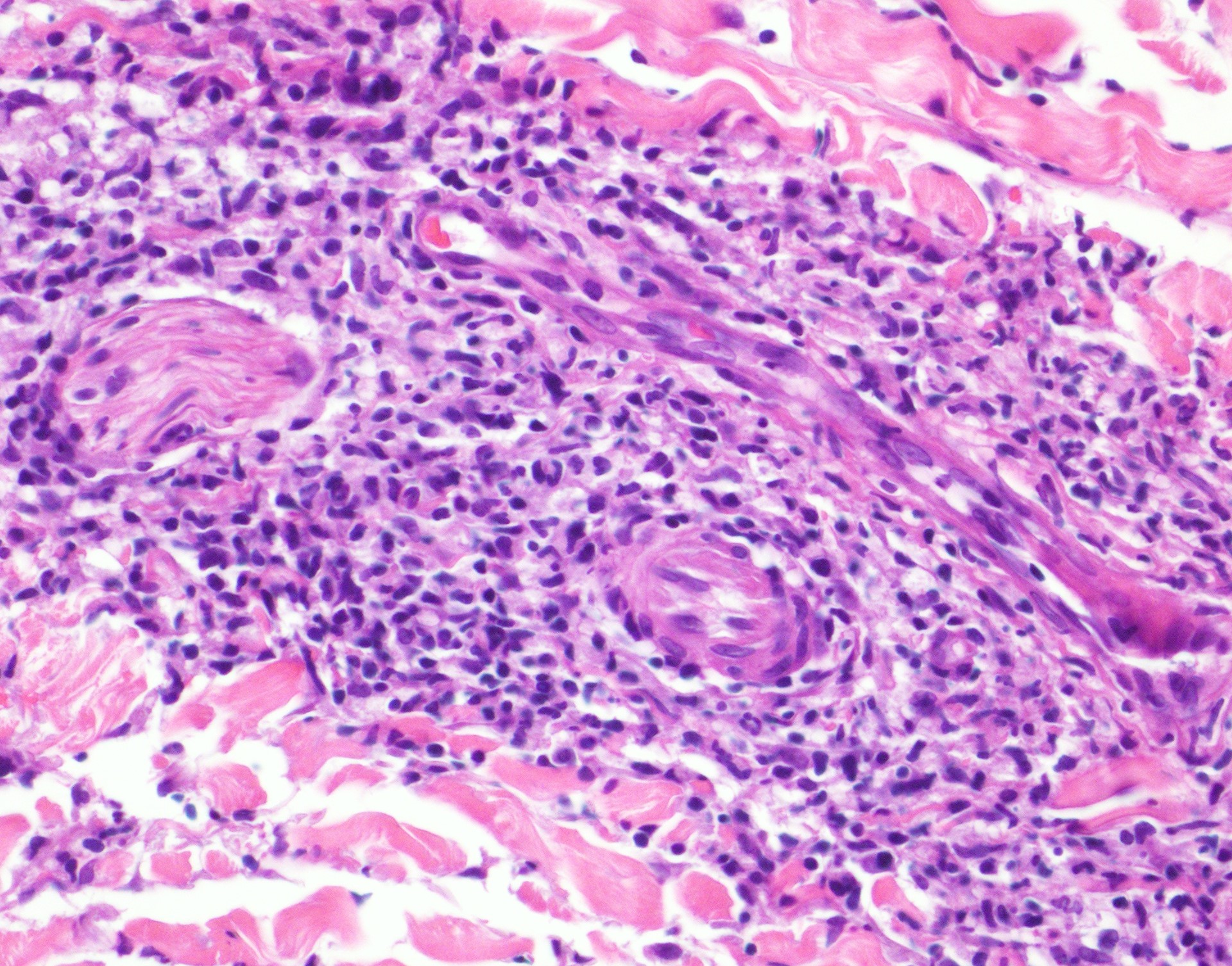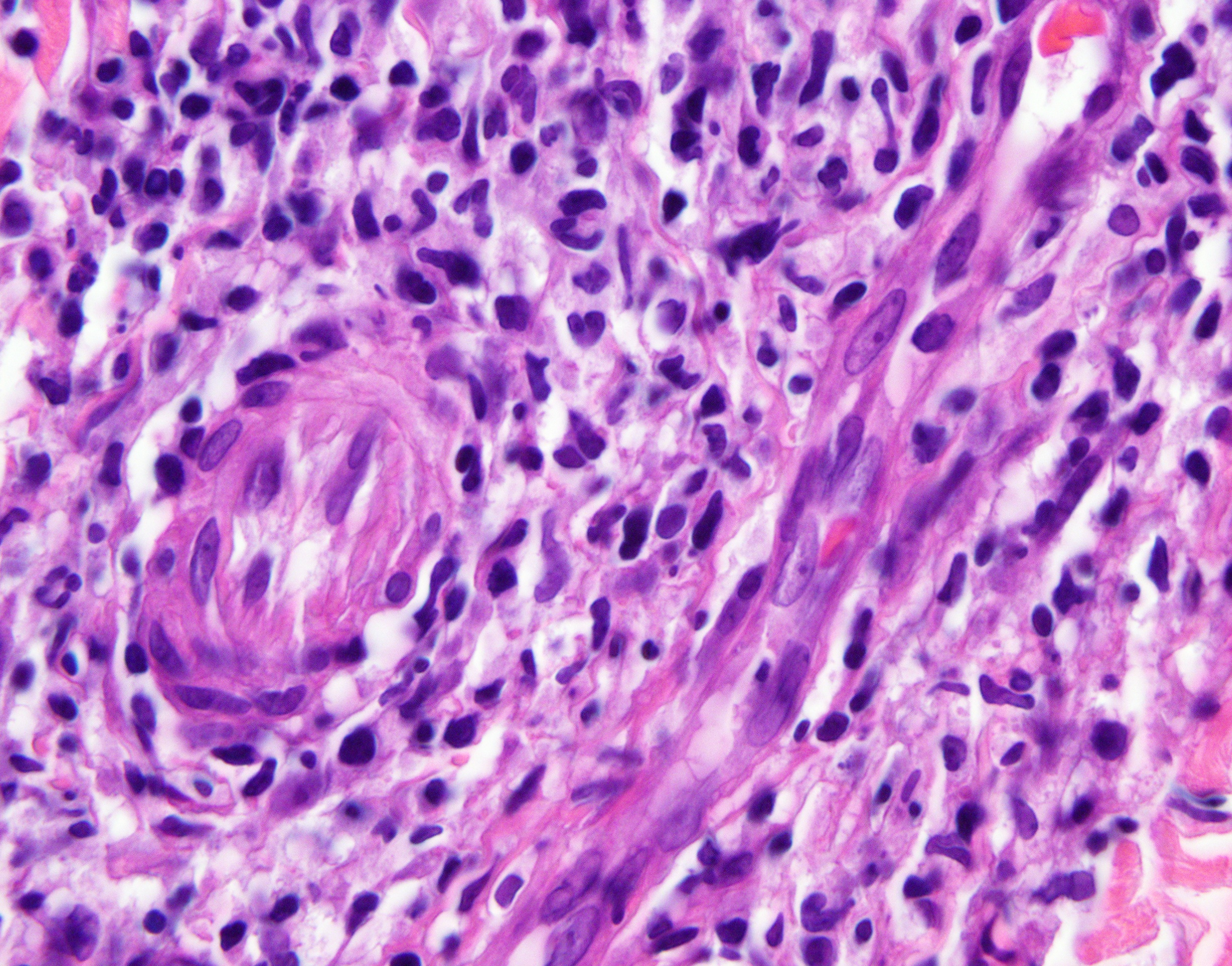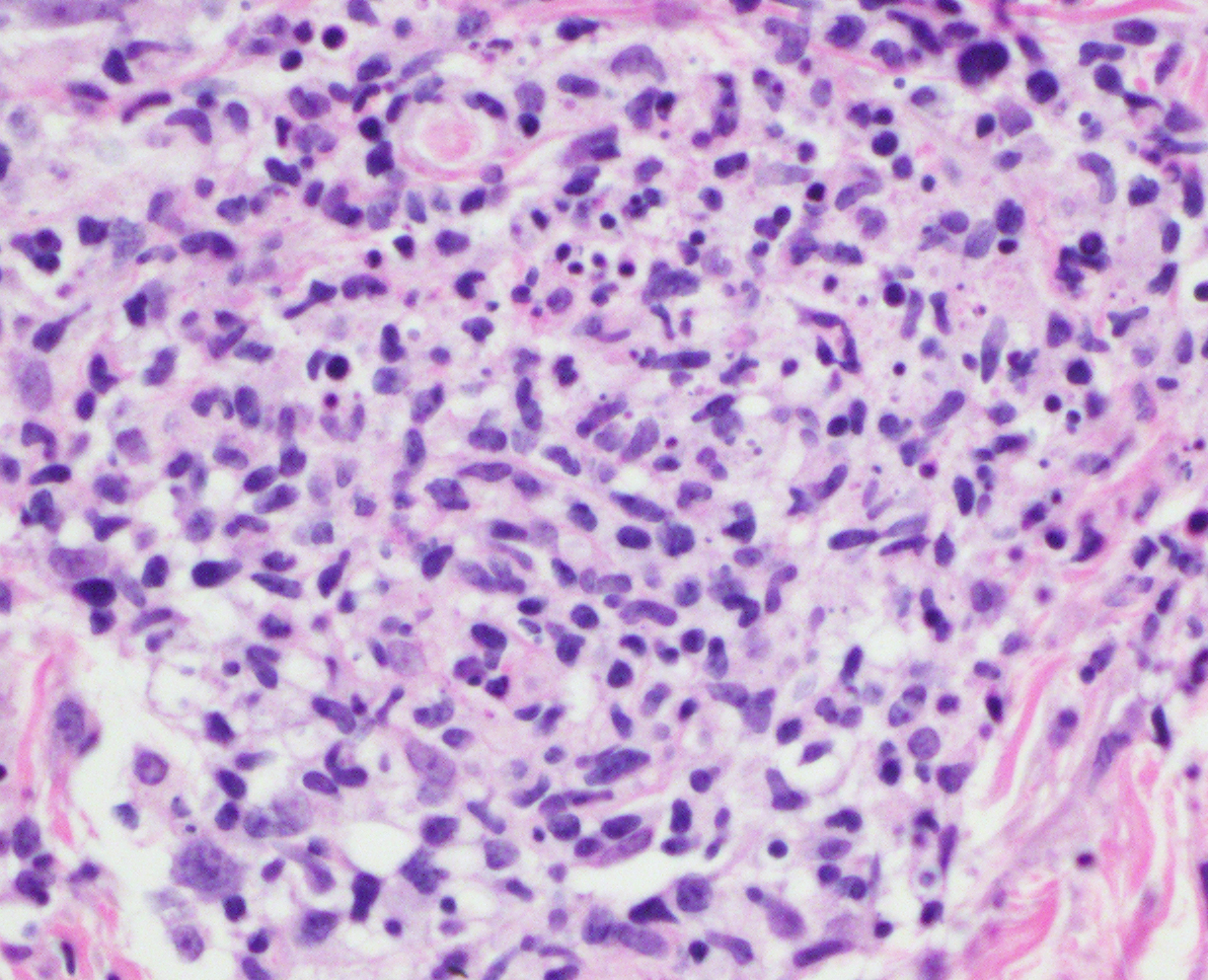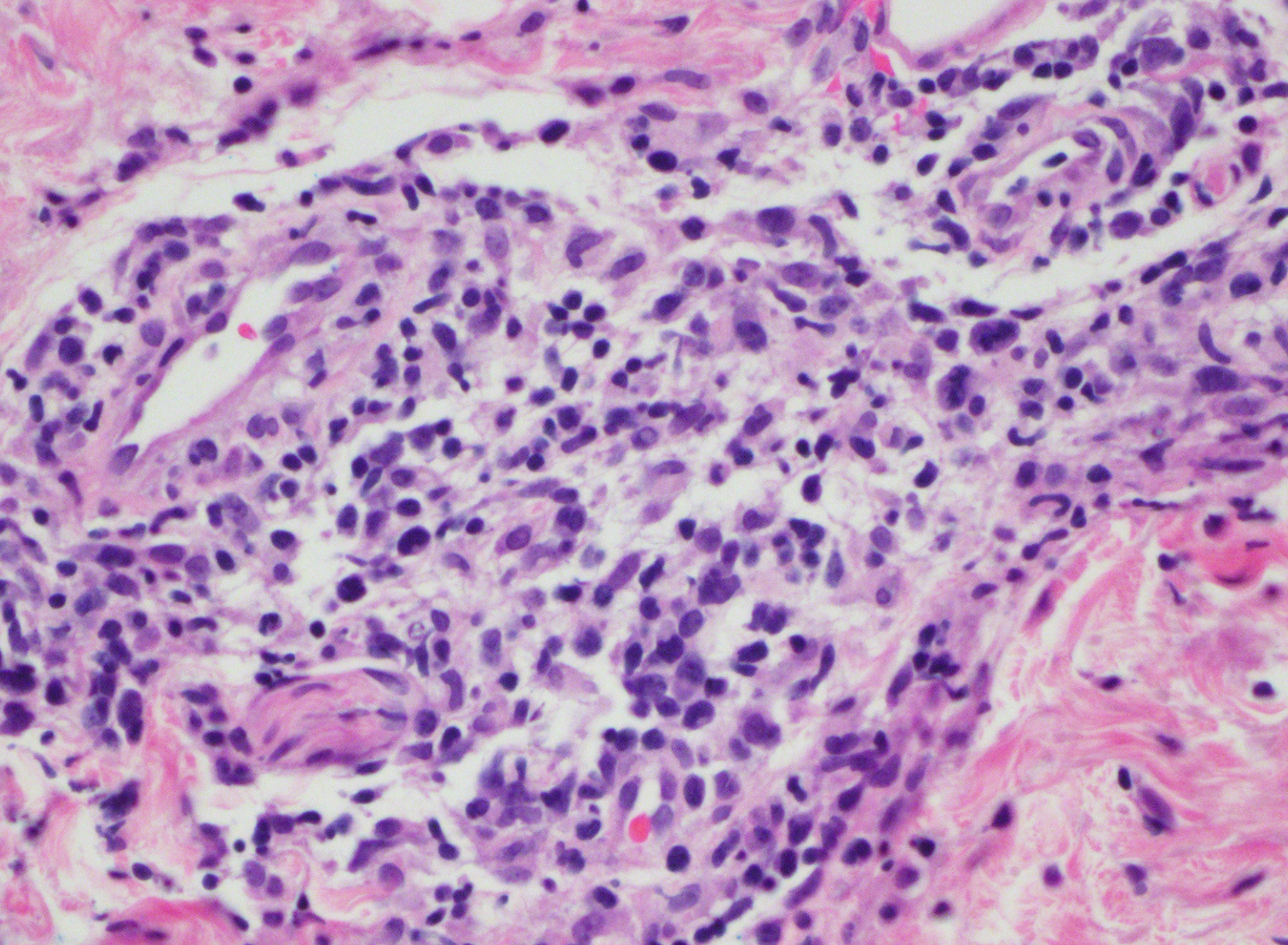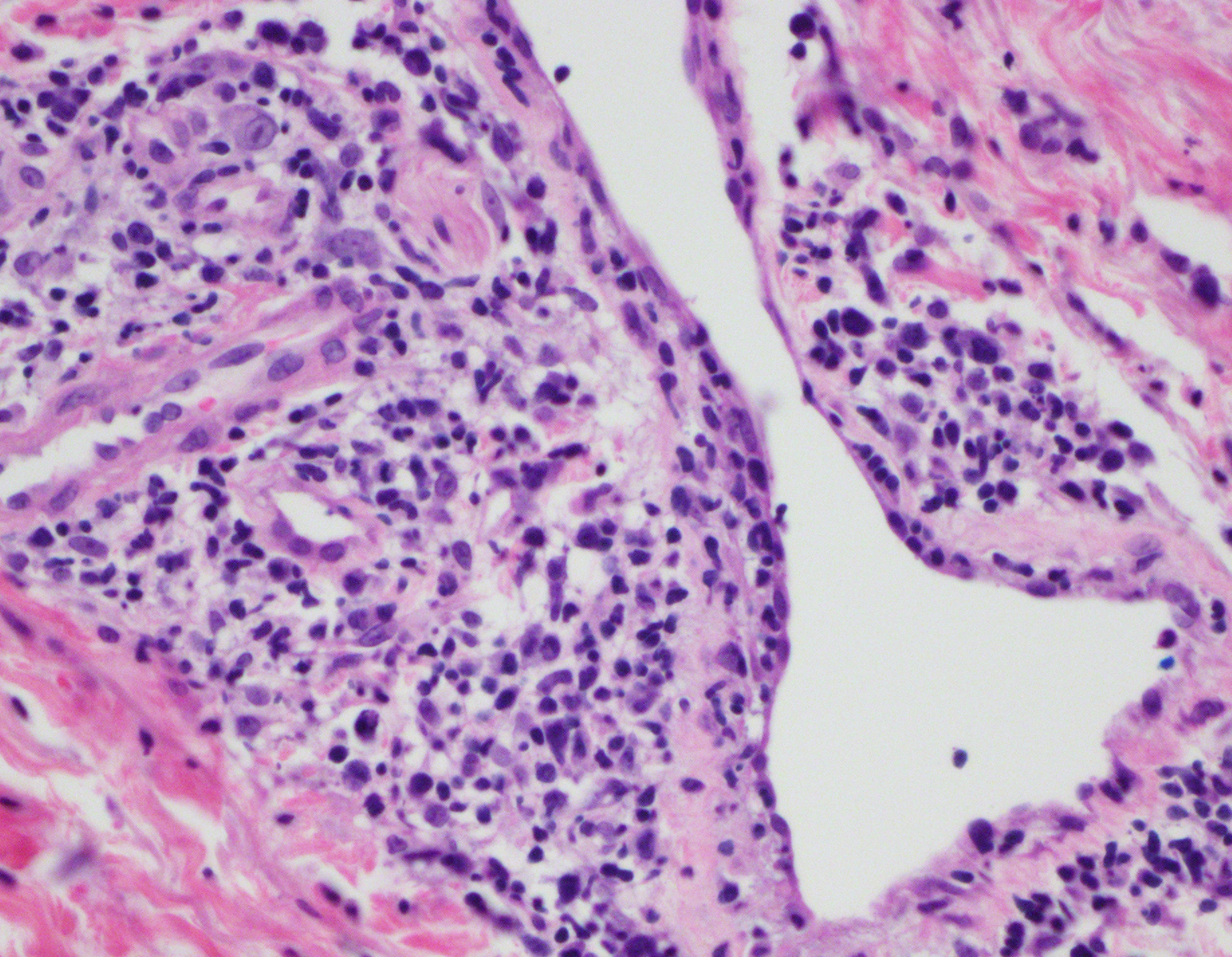Final Diagnosis: Cutaneous Kikuchi's Disease/Cutaneous Kikuchi's Disease-Like Inflammatory Pattern with Atypical Lymphomatoid Features
Diagnosis Comment: The question is whether or not this lymphomatoid process reflects an evolving endogenous T-cell dyscrasia potentially arising in this Kikuchi's-like inflammatory pattern or if the lymphomatoid aspect of the infiltrate at this point in the patient's clinical evolution is a reactive process in the setting of the patient's Kikuchi's disease-like inflammatory pattern. There is, in fact, literature precedent regarding significant lymphoid atypia occuring in Kikuchi's disease where it can be confused with lymphoma. These cases bear a striking resemblance to a T-cell lymphoma because of the proliferation of large transformed cells with a high proliferation index, and as well CD5 was decreased in 40% of the cases. In conclusion, large T-cell proliferations can be alarming and are part of the histopathology of Kikuchi's disease. This type of lymphomatoid response is not uncommon in the spectrum of unusual autoinflammatory and autoimmune diseases.


